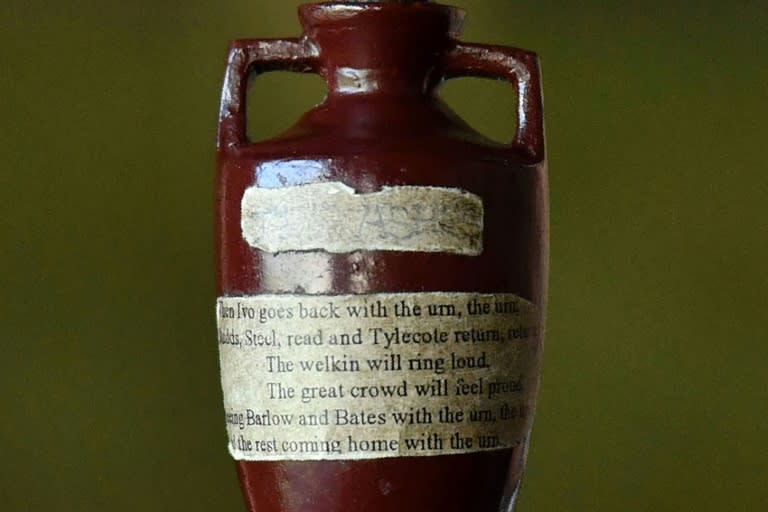
England and Australia will renew their storied rivalry on Friday in the first Test of the latest Ashes series at Edgbaston.
But what exactly are the Ashes and why does the contest inspire such passion between two otherwise friendly countries on opposite sides of the world?
AFP Sport explains the history behind one of sport’s oldest and most intense contests.
The facts
The “Ashes” is the name given to the series of Test matches played between England and Australia, generally every two years.
Test matches each last a maximum of five days, with the overall winner of the series presented with a replica of the historic Ashes urn.
Australia are the current holders after winning the 2021/22 edition on home soil.
The upcoming series is the first Ashes contest to be staged in England since the 2019 series ended in a 2-2 draw.
England’s last series victory came in 2015.
‘The body will be cremated’
The use of the term “Ashes” dates from England’s first home defeat against Australia at The Oval in London in 1882.
Following Australia’s victory, Sporting Times journalist Reginald Shirley Brooks printed a mock obituary of English cricket, saying: “The body will be cremated and the ashes taken to Australia”.
A few weeks later, England set off to tour Australia and, after a “social” match near Melbourne on Christmas Eve 1882, English captain Ivo Bligh was given a small terracotta urn as a symbol of the “Ashes” he had sworn to win back.
Standing at little more than 10 centimetres (four inches) tall, the original Ashes urn resides in the Marylebone Cricket Club museum at the famous Lord’s ground in London.
In 1998, Bligh’s 82-year-old daughter-in-law said the urn contains the remains of her mother-in-law’s veil, while others claim it is filled with the ashes of a burnt cricket bail.
Bloody faces and bitter feuds
Few sporting rivalries are fiercer than the Ashes, with battered bodies and bloodied faces all part of more than a century of feuding.
In the 1932/33 “Bodyline” series, England deliberately aimed fast deliveries at Australian batters’ bodies rather than the stumps in the hope they would get out trying to protect themselves.
The aggressive tactic was seen as unsporting, but unrepentant England won the series to the fury of their bruised opponents.
The Ashes has provided some of cricket’s most memorable moments.
The 1981 series was named “Botham’s Ashes” after all-rounder Ian Botham’s feats with bat and ball inspired England to victory.
Australia spinner Shane Warne provided one of the most iconic moments in Ashes history when his incredible “ball of the century” bowled Mike Gatting in 1993.
Arguably the greatest Ashes series was played in 2005 when England, powered by Andrew Flintoff and Kevin Pietersen, beat an Australia team packed with stars.
The tone for that series — England’s first Ashes triumph since 1986/87 — was set early in the first Test when Steve Harmison’s bouncer left Australia batsman Ricky Ponting with blood streaming down his face.
smg/jw
Article courtesy of
Source link